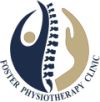Dry needling is a therapeutic technique that involves the
insertion of thin, solid needles into the skin and underlying tissues, without
injecting any substances. It is primarily used to target trigger points, which
are tight bands of muscle fibers that can cause pain, stiffness, and
dysfunction. Here’s a summary of dry needling:
1. Procedure:
During a dry needling session, a trained healthcare professional, such as a
physical therapist or an acupuncturist, inserts a thin needle directly into a
trigger point or other areas of muscle tightness or dysfunction. The needles
used in dry needling are typically much thinner than those used in traditional
acupuncture.
2. Targeting
trigger points: Dry needling is specifically focused on treating trigger
points, which are hypersensitive areas within the muscles. These trigger points
are associated with the formation of knots, muscle tension, and referred pain.
By inserting the needle into the trigger point, it aims to stimulate a healing
response and release muscle tension.
3. Mechanisms
of action: Dry needling is thought to work through various mechanisms,
including:
• Local
effects: The needle insertion can cause a local twitch response in the muscle,
which is believed to help relax the muscle fibers and break up the trigger
point.
• Neurophysiological
effects: The needle insertion may stimulate sensory nerves, leading to the
release of endorphins (natural pain-relieving substances) and the modulation of
pain signals.
• Improved
blood flow: The insertion of needles can promote local blood circulation, which
may facilitate the delivery of oxygen and nutrients to the tissues, aiding in
the healing process.
4. Indications
for dry needling: Dry needling is commonly used as part of a comprehensive
treatment approach for various musculoskeletal conditions, including:
• Myofascial
pain syndrome: Dry needling is often effective in relieving pain and tension
associated with myofascial trigger points.
• Musculoskeletal
injuries: It can be used to target specific muscles or areas affected by strains,
sprains, or overuse injuries.
• Chronic
pain conditions: Dry needling may be considered for chronic pain conditions
such as fibromyalgia, osteoarthritis, or neuropathic pain, although individual
responses can vary.
5. Safety
and precautions: Dry needling should only be performed by trained healthcare
professionals who have undergone specific training in the technique. The
needles used are single-use and sterile to minimize the risk of infection. The
procedure is generally safe, but potential side effects may include temporary
soreness, bruising, or bleeding at the insertion site. It is essential to
disclose any medical conditions, allergies, or medications to the practitioner
before undergoing dry needling.
6. Integration
with other treatments: Dry needling is often used in conjunction with other
therapies, such as manual therapy, exercise, and stretching programs, to
optimize outcomes and address the underlying causes of the musculoskeletal
condition.
